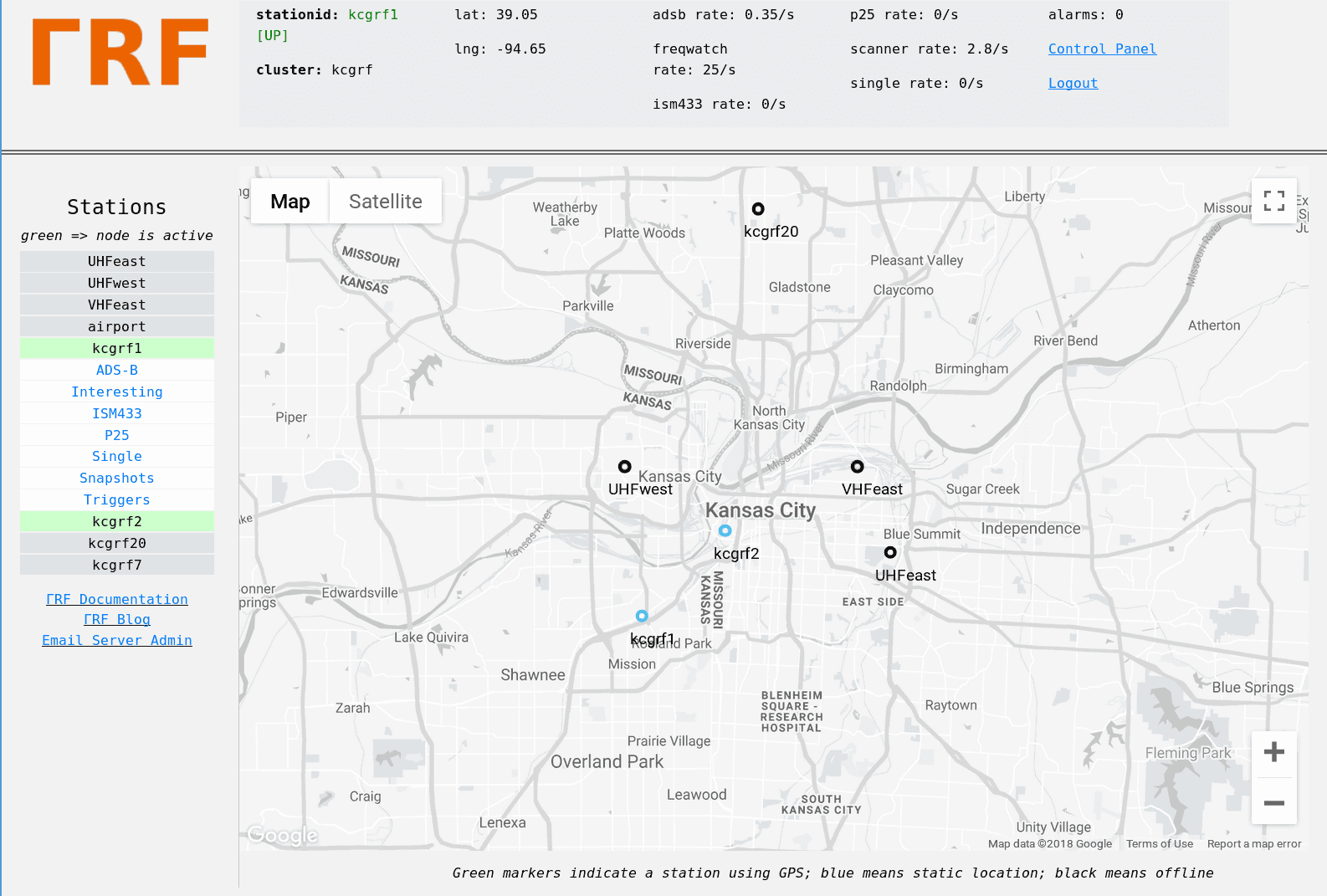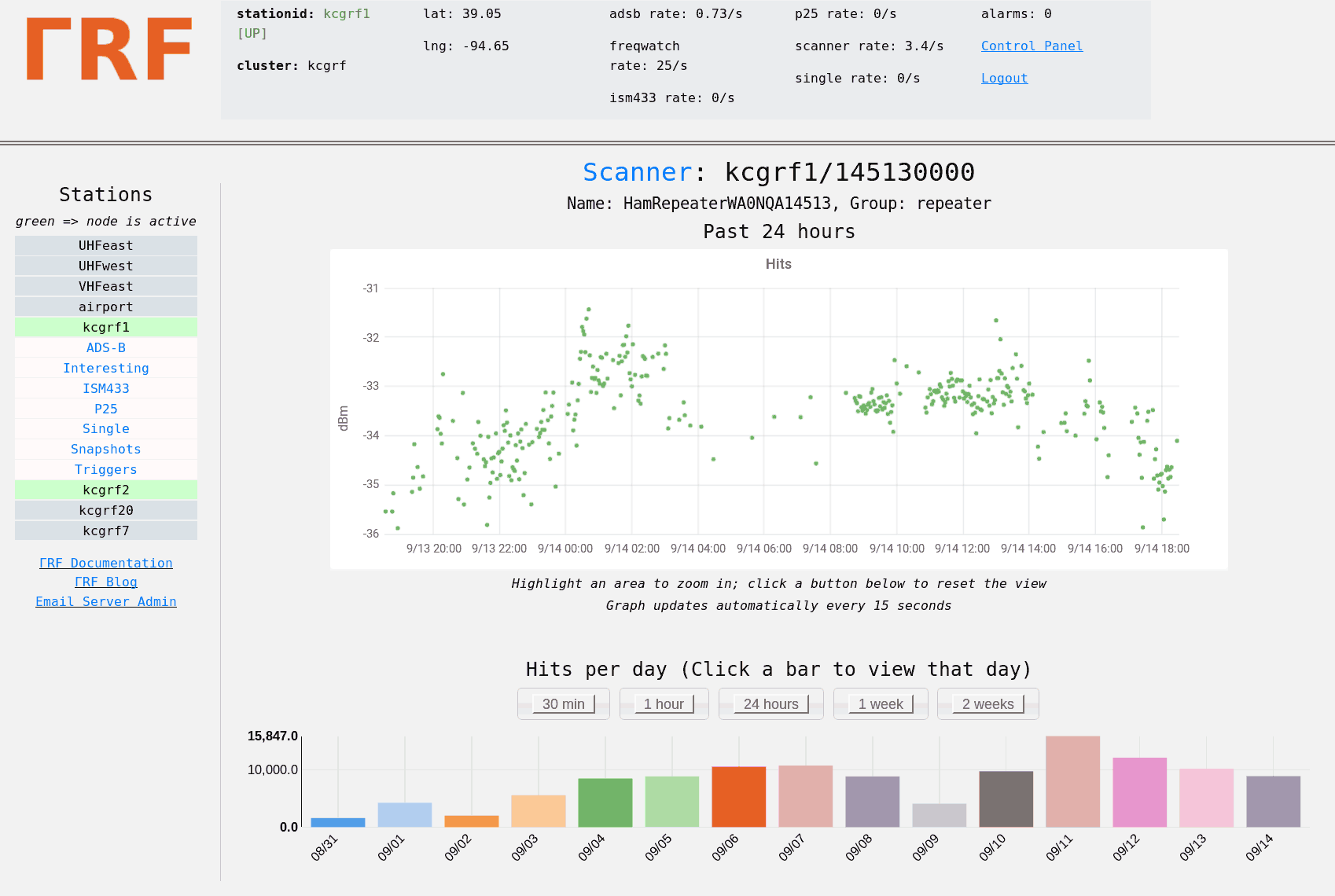GammaRF: Distributed Radio Signal Collection and Analysis with RTL-SDR and HackRF
Thank you to Josh for submitting news about his project called GammaRF. GammaRF is an client-server program that is used to aggregate signal information via the internet from distributed SDRs. Currently the RTL-SDR and HackRF SDRs are supported.
ΓRF (“GammaRF”, or “GRF”) is a radio signal collection, storage, and analysis system based on inexpensive distributed nodes and a central server. Put another way, it is a distributed system for aggregating information about signals, and a back-end infrastructure for processing this collected information into coherent “products”.
Nodes utilize inexpensive hardware such as RTL-SDR and HackRF radios, and computers as small and inexpensive as Intel NUCs. Each node runs modules which provide various radio monitoring functionality, such as monitoring frequencies for “hits”, watching power levels, keeping track of aircraft (through ADS-B), and more. Nodes are distributed geographically and their data is combined on the server for hybrid analysis.
A web-based system allows users to view information from and about each station in its area. Below shows the server landing page. Markers are placed at each station’s last known location (stations can be mobile or stationary.)

From the currently implemented modules it appears that you can monitor ADS-B, scan and monitor the power of a set of frequencies, forward the output from trunk-recorder (a P25 call recorder), scan the spectrum and monitor power levels, monitor a single frequency for activity, take a picture of a swath of RF spectrum, and collect 433 MHz ISM data. Some example applications might include:
- Monitoring ham radio activity on repeaters in a city
- Creating timelines of emergency services activity in an area
- Distributed tracking of satellites and other mobile emitters
- Monitoring power at a frequency, for example as a mobile node traverses an area (e.g. signal source location)
- Building direction finding networks (e.g. for fox hunts)
- Spectrum enumeration (finding channels and guessing modulation) [under development]

I tried to access kcgrf.gammarf.io and it will not come up. Any status on the server access?
It would be great if the developers would consider open-sourcing the backend / server part. I’d definitely want to give it a try if they did as I prefer self-hosted solutions.
I would really like to try it out with some Raspberry Pis but I don’t think that the documentation is clear enough for beginners (or people not familiar with linux).
If these devices had GPS input and a known training signal (local FM station or GSM channel for calibration) on that same computer, you could really sync-up those inquiries giving you excellent resolution on analyzing/geo-locating signals, even using just an RTL-SDR. Imagine also throwing in a line of bearing (LOB) by using a KerberosSDR here or there. Now that would be some fidelity.